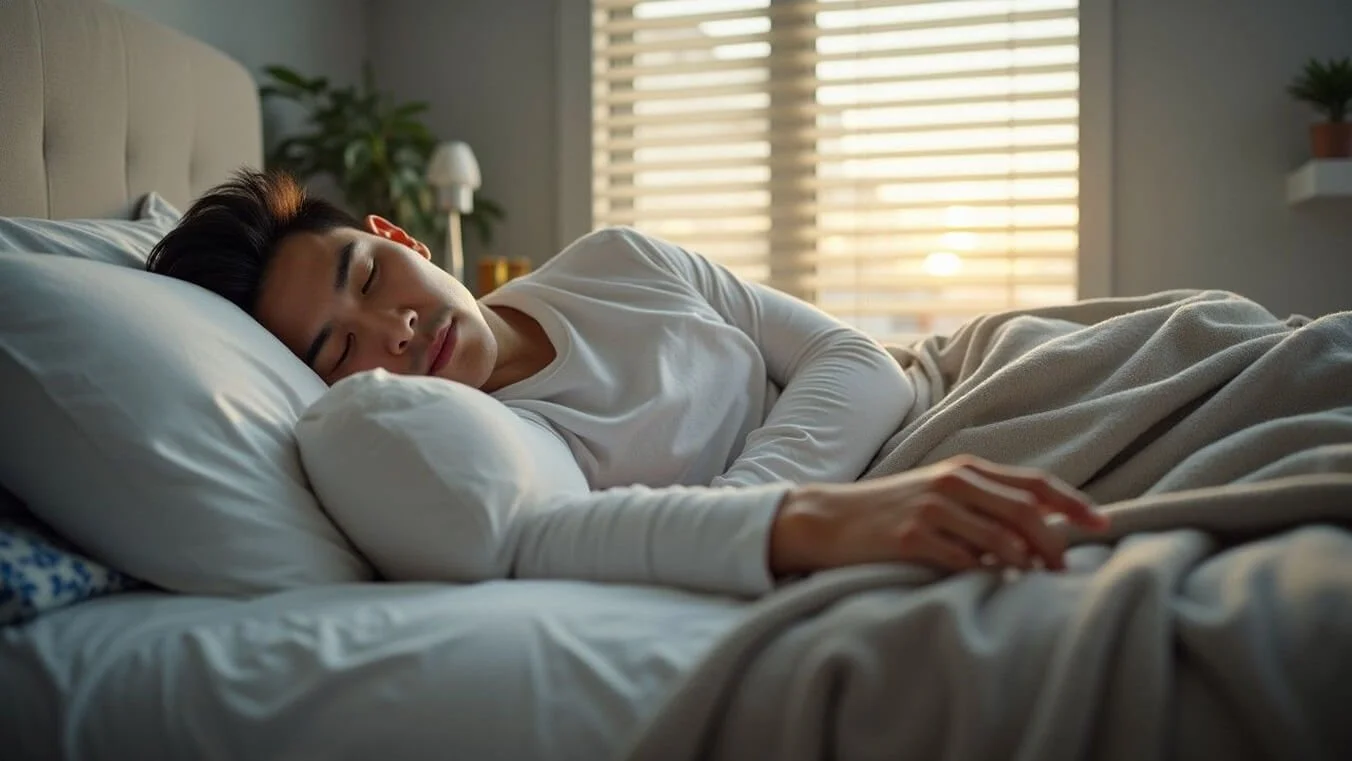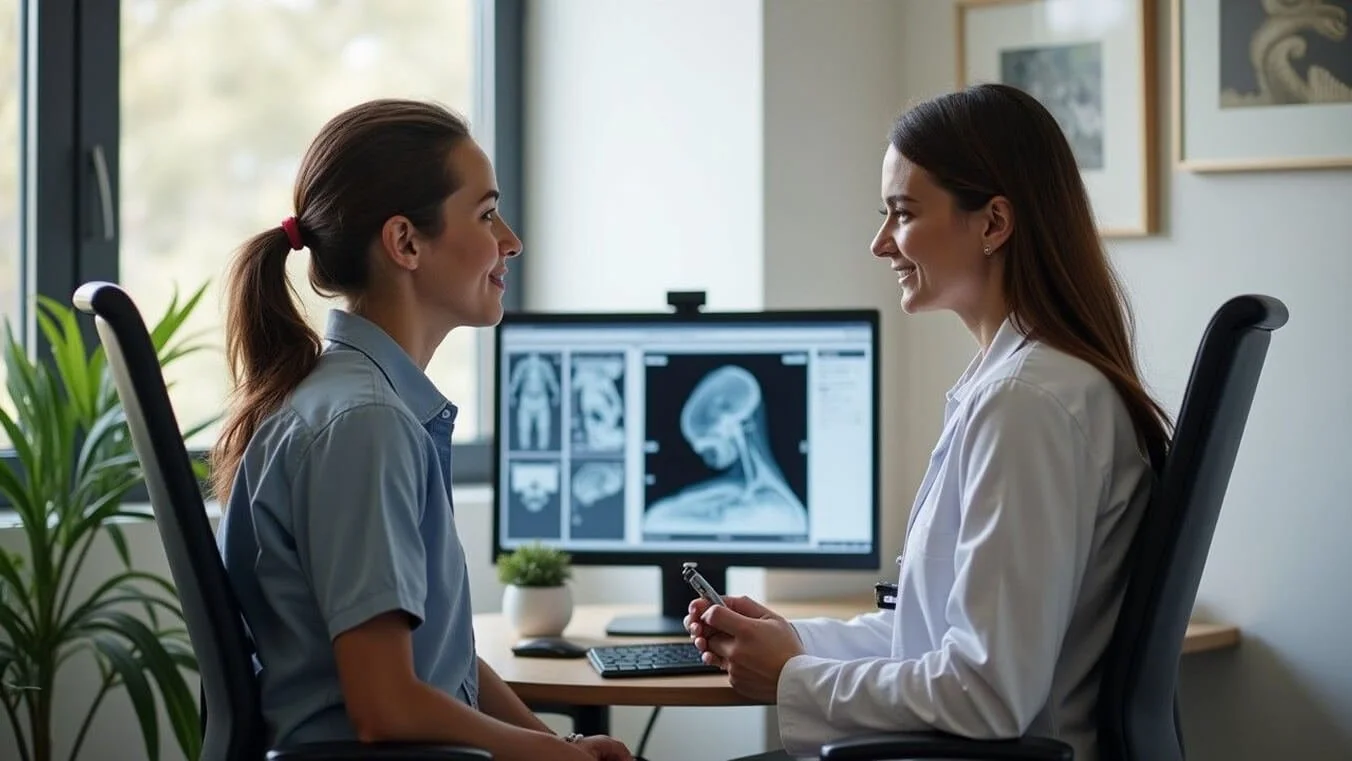DVA Sleep Apnea: Claims, Impairment Points and Treatment Coverage
DVA sleep apnea is a significant but often overlooked issue affecting thousands of Australian veterans. Many don’t realise they can claim Department of Veterans’ Affairs (DVA) compensation for this service-related condition. If you experience interrupted breathing during sleep, excessive daytime fatigue, or require a CPAP machine, you may be eligible for permanent impairment payments and access to DVA-funded treatment. Understanding how the DVA assesses sleep apnea under the MRCA legislation and knowing what medical evidence strengthens your claim can make the difference between a smooth process and years of frustration.
Start Your DVA Claim Today
Get expert help to navigate the claim process and secure the compensation you deserve. With zero upfront fees, you only pay for successful claims.
What Is Sleep Apnoea and How Does It Affect Veterans?
Sleep apnoea is a sleep disorder characterised by repeated pauses or reductions in airflow through the upper airway during sleep, resulting in arousals and fragmented sleep. It commonly leads to daytime sleepiness, difficulties with memory and concentration, morning headaches, and can be associated with hypertension and other cardiac or respiratory complications.
According to research, about 5% of Australians have sleep apnoea, with around 1 in 4 men over 30 affected; the condition is about three times more common in men than women. Veteran cohorts experience high rates of sleep disturbance, and Australian Department of Veterans’ Affairs evidence reviews highlight that sleep problems are highly prevalent among veterans and often linked with PTSD, physical injuries and operational stress.
Types of Sleep Apnoea
Three distinct types of sleep apnoea can affect veterans, each with different underlying causes requiring specific assessment approaches.
Obstructive Sleep Apnoea (OSA): The most common form you'll encounter. Your throat muscles relax too much during sleep, causing the soft tissue in your airway to collapse and block normal breathing. You may experience loud snoring, gasping, or choking sounds as your body struggles to take in air.
Central Sleep Apnoea (CSA): Occurs when your brain fails to send proper signals to the muscles controlling breathing. Unlike OSA, there's no physical blockage; your brain simply stops telling your body to breathe for brief periods during sleep.
Complex Sleep Apnoea Syndrome: Combines both obstructive and central sleep apnoea characteristics, making it more challenging to treat and assess for DVA compensation purposes.
Common Symptoms Veterans Experience
Sleep apnoea manifests through multiple symptoms that impact your daily life and work capacity. You may wake frequently throughout the night with a choking sensation or a dry mouth, even if you don't recall these episodes. Loud, persistent snoring often affects your partner's sleep as well.
During the day, you feel excessively tired despite spending adequate time in bed. You struggle to concentrate on tasks, experience memory problems, or feel irritable and short-tempered with colleagues and family. Morning headaches, decreased libido, and difficulty controlling your weight are also common indicators.
These symptoms directly impact your ability to maintain employment, participate in family activities, and enjoy the quality of life you deserve after your service.
How DVA Assesses Sleep Apnoea Under MRCA
When sleep apnoea is accepted as a service-related condition, DVA assesses its impact using the Guide to Determining Impairment and Compensation (GARP M). Under the Military Rehabilitation and Compensation Act (MRCA), sleep apnoea is classified as a cardiorespiratory condition and assessed under Chapter 1 of GARP M, which outlines the measurement of cardiorespiratory impairment.
How GARP M Determines Impairment
GARP M expresses impairment as a rating between 0 and 100 points. The assessment is based on clinical findings from a recognised sleep study, the type and extent of treatment required, and the impact of the condition on daily functioning and sleep quality.
Impairment Points for Sleep Apnoea
Impairment points are determined using objective medical evidence and treatment requirements.
Cases managed without ongoing treatment or showing minimal functional impact generally attract low impairment ratings, often below the 10-point compensation threshold.
Where treatment such as CPAP therapy, oral appliances, or other respiratory aids is prescribed, a higher impairment rating may apply to reflect the ongoing management needs.
Conditions that contribute to respiratory or cardiovascular complications, such as carbon dioxide retention or cor pulmonale, are assessed with additional consideration under GARP M, which may increase the overall impairment rating when combined with other accepted conditions.
Medical Evidence Required for Assessment
DVA requires objective medical evidence to assess a sleep apnoea claim; a formal polysomnography by a qualified sleep specialist is mandatory, and self-reported symptoms are insufficient. The study must document your AHI, oxygen desaturation levels, sleep architecture disruptions, and any sleep-related cardiac arrhythmias, as these measurements underpin your impairment rating under GARP M.
If you use CPAP or other assisted breathing devices, please provide your prescription, machine compliance data, and ongoing treatment records. Regular follow-ups demonstrating continued need for therapy will further strengthen your claim.
Establishing Service Connection for Sleep Apnoea Claims
Under DVA guidance on making claims, you must show your sleep apnoea is service-related by:
Establishing either a direct connection, meaning symptoms began in service or were caused by service factors, or a secondary connection to another accepted service-related condition, and DVA must accept this causal link before compensation and treatment are available
Provide evidence that the condition arose out of, or was aggravated by, your ADF service, such as contemporaneous medical records, documented exposures, or proof of worsening during service.
Direct Service Connection Pathways
Direct service connection for sleep apnoea can be shown by:
In-service onset documented in medical records (e.g., snoring, witnessed pauses, excessive daytime fatigue, sleep disturbance)
Service injuries that altered airway anatomy (facial, jaw, or nasal trauma)
Operational factors (shift work, deployment-related sleep loss, environmental exposures), when corroborated by records and a post-service diagnosis.
Secondary Service Connection
Secondary service connection is the most common pathway for veterans’ sleep apnoea claims: the condition develops as a consequence of an already accepted service-related condition, forming a transparent chain from service to the current disorder. Mental health conditions such as PTSD, depression and anxiety can disrupt sleep, drive hypervigilance and contribute to weight gain, which increases the risk of sleep apnoea under the MRCA.
The Importance of Specialist Medical Reports
For DVA claims, delegates apply Statements of Principles (SoPs); the most substantial evidence is a sleep or respiratory specialist’s report that addresses the relevant SoP factors and uses the correct standard of proof, namely, a reasonable hypothesis for warlike or non-warlike service, or a balance of probabilities for peacetime.
It should confirm your diagnosis and type of sleep apnoea based on the sleep study results.
Explain how the service or accepted conditions contributed (mapped to SoP factors)
Cite your records, clinical findings, and relevant literature, and conclude with a clear opinion in accordance with the applicable standard.
Generic or templated letters carry little weight, and DVA prioritises clear, complete, case-specific reports.
Treatment Coverage Through DVA Gold and White Cards
Once DVA accepts liability for your sleep apnoea, you can access treatment through your DVA health card, depending on the type of card you hold and your specific entitlements. The type of coverage you receive depends on whether you have a Gold Card, White Card, or qualify for non-liability health care provisions.
According to the DVA's Rehabilitation Appliances Program guidelines, sleep-related breathing disorders fall under the non-invasive ventilation provisions, specifically positive airway pressure (PAP), which are covered through multiple RAP schedule items. This program provides eligible veterans with CPAP machines, masks, tubing, and ongoing replacement supplies.
Gold Card Coverage
With a DVA Gold Card, you can access clinically necessary care for sleep apnoea even if the condition is not yet accepted, noting that some items may still require prior approval. This typically includes GP-referred sleep studies, specialist consultations with DVA-approved sleep or respiratory physicians, and ongoing management. CPAP machines and related supplies are provided through the Rehabilitation Appliances Program (RAP) with no copayments when arranged through approved suppliers. Replacement masks, tubing, filters and other consumables are supplied in line with clinical need and RAP guidance.
White Card Coverage
With a DVA White Card, DVA funds clinically necessary treatment only for conditions that are accepted as related to service. If your sleep apnoea is accepted, your White Card can cover GP-referred sleep studies, specialist consultations, and CPAP equipment and supplies via the Rehabilitation Appliances Program. If it is not accepted, diagnosis and treatment of sleep apnoea are not covered, and you would need to use Medicare or private options.
Separately, under the Non-Liability Health Care (NLHC) program, DVA provides fully funded treatment for any mental health condition without requiring a service connection; however, NLHC does not fund treatment for sleep apnoea. You can access mental health care under NLHC while pursuing your sleep apnoea claim if relevant.
How to Claim DVA Compensation for Sleep Apnoea
Submitting a successful sleep apnoea claim requires careful preparation, comprehensive medical evidence, and a thorough understanding of the DVA's assessment processes. Following the right steps in the correct order significantly improves your chances of approval and reduces processing delays.
Step 1: Obtain a Formal Sleep Apnoea Diagnosis
Before lodging your claim, book a referral from your GP to a sleep/respiratory specialist for an overnight sleep study (polysomnography). Make sure your sleep study report includes:
Apnoea–Hypopnoea Index (AHI) and severity
Oxygen desaturations and any cardiovascular/neurological impacts noted
Recommended treatment
If CPAP/PAP is prescribed, start treatment and keep compliance data (machine usage reports). This isn’t a formal requirement for liability, but is strong supporting evidence for treatment need and impairment.
Step 2: Build Service Connection Evidence
DVA decides liability by applying the Statement of Principles (SoP) for sleep apnoea. Your goal is to map your evidence to the SoP factors that can cause or aggravate sleep apnoea.
Collect service records: Medical and personnel files showing sleep problems, snoring, fatigue, witnessed apnoeas, or related health changes during/after service.
Claiming secondary connection: Gather evidence for the primary accepted (or claimed) condition and show how it led to, caused, or materially contributed to sleep apnoea in a way that aligns with the SoP.
Lay evidence: Buddy statements (peers who observed you snoring/pausing breathing) and family statements (post-deployment changes). Treat these as supporting evidence alongside your medical file.
Medical opinion: Ask your specialist to provide a clear report that:
Confirms diagnosis
Outlines the clinical course,
Explains how the evidence meets the SoP criteria for service connection or aggravation.
Step 3: Lodge Your Initial Liability Claim
Submit your initial liability claim through MyService. You can include multiple conditions in one claim if relevant.
Attach up front:
Specialist diagnosis + sleep study report
Service and civilian medical records
Any specialist report that addresses the SoP factors
Lay statements
Processing times vary depending on complexity and workload. Respond promptly to any DVA information requests to avoid delays. You can track progress in MyService.
Step 4: Complete Permanent Impairment Assessment
If liability is accepted and you wish to pursue compensation:
DVA arranges a medical assessment and applies GARP M.
You’ll complete a lifestyle rating questionnaire (or DVA may determine this from evidence). This looks at impacts on work, recreation, social life, and self-care.
Eligibility threshold under MRCA, PI compensation generally requires 10 impairment points.
Your medical impairment points, combined with your lifestyle rating, form a compensation factor that determines the amount and form of compensation, and this factor interacts with your age and service type.
Common Conditions That Link to Sleep Apnoea
Sleep apnoea rarely exists in isolation; it frequently develops alongside or because of other service-related conditions affecting veterans. Exploring these connections helps you identify all claimable conditions and establish stronger secondary connection arguments for your sleep apnoea claim.
Mental Health Conditions
PTSD is a common pathway to secondary sleep apnoea claims: hypervigilance, nightmares, and anxiety disrupt restorative sleep and increase the risk of obstructive sleep apnoea, and the relationship is bidirectional, as each condition worsens the other. CPAP use often falters due to nightmares, claustrophobia, and hypervigilance.
Depression and anxiety also raise sleep apnoea risk through:
Reduced activity
Weight gain
Medication effects on breathing
Irregular sleep.
When mental health claims are accepted, medical evidence can more readily establish sleep apnoea as secondary.
Traumatic Brain Injury
Service-related TBIs, including mild cases that didn’t require hospitalisation, can disrupt the brain’s respiratory control centres and directly cause central sleep apnoea. Veterans with TBI often have coexisting sleep disorders (insomnia, circadian rhythm disruption), compounding cognitive deficits, slowing rehabilitation, and reducing quality of life. If you sustained head injuries in service (vehicle accidents, blasts, training, combat), document them when claiming sleep apnoea; brain imaging showing structural damage to respiratory control areas further strengthens a direct connection claim.
Musculoskeletal Conditions
Service-connected musculoskeletal conditions, such as knee injuries, neck injuries, or cervical spine conditions, can contribute to secondary sleep apnoea by limiting activity, promoting weight gain, and altering airway anatomy. Obesity is a major factor in obstructive sleep apnoea. If your injuries prevented you from maintaining pre-service fitness and led to weight gain that caused sleep apnoea, this secondary pathway may support your claim.
Cardiovascular Conditions
Sleep apnoea and cardiovascular disease are bidirectionally linked: apnoea-related oxygen desaturations strain the cardiovascular system, increasing risks of hypertension, arrhythmias, and heart attack, while existing heart disease can worsen sleep-disordered breathing. If you have service-related cardiovascular conditions, sleep apnoea may be secondary to them or an independent condition that exacerbates them; a thorough medical evaluation is needed to determine causation and guide how to file claims.
Why Professional Help Makes a Difference
Sleep apnoea claims involve complex medical evidence, detailed service connection arguments, and a thorough understanding of GARP M assessment criteria.
Common issues
Many veterans struggle to gather the right evidence or don’t realise they need formal sleep studies before making a claim.
We’ve seen countless veterans receive insufficient impairment ratings because their initial medical assessments didn’t capture the full severity of their sleep apnoea or failed to document how the condition affects their lifestyle.
Others never pursue claims at all, not realising their sleep problems constitute a compensable service-related condition.
How Professional Guidance Helps
Professional guidance helps you gather comprehensive medical evidence before lodging your claim, reducing the risk of rejection or inadequate impairment ratings.
We work with sleep specialists and other medical professionals who understand DVA assessment criteria and can provide the evidence DVA needs to properly assess your claim.
Our permanent impairment claims service guides you through every step of the process, from obtaining a proper diagnosis to final compensation determination.
We’ve helped hundreds of veterans secure the compensation they deserve for sleep apnoea and related conditions.
Start Your Sleep Apnoea Claim Today
Don’t let another night of interrupted breathing rob you of the rest and compensation you’ve earned. If you experience sleep apnoea symptoms or already have a diagnosis, you may qualify for DVA compensation and access to free treatment through your health card. Veterans First Consulting assists veterans with DVA claims by helping your claim include all necessary medical evidence and strong service connection arguments that give you the best chance of success. Reach out today to discuss your sleep apnoea claim and find out what compensation you may qualify for. We work on a no-win, no-fee basis, so you only pay when your claim is successful.
Simplify Your DVA Claim: Get the Compensation You Deserve
Veterans First Consulting is here to guide you. Leave us a message, and a team member will reach out to discuss your new claim or reassessment. With zero upfront fees, you only pay for successful claims. Fill out the form below to get started.




